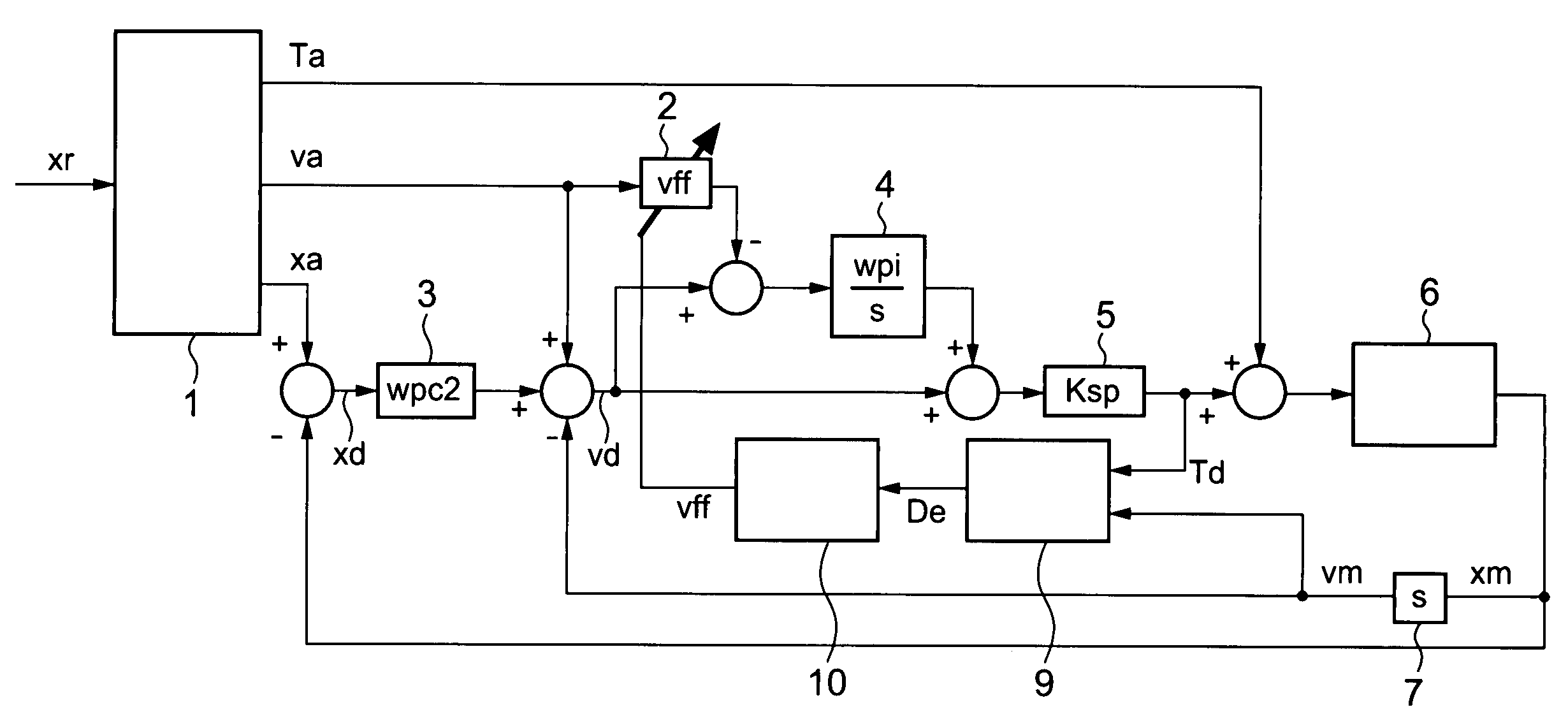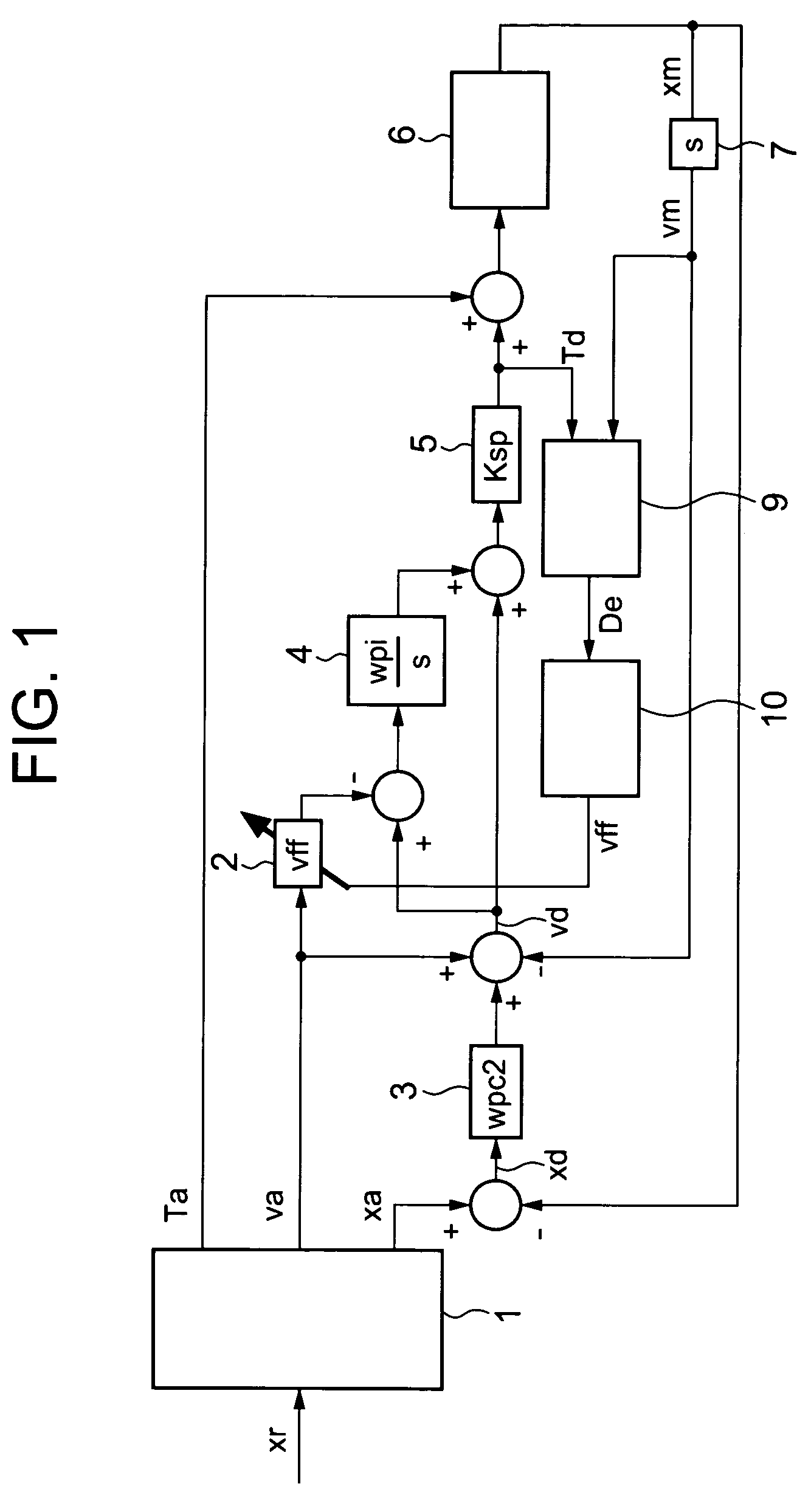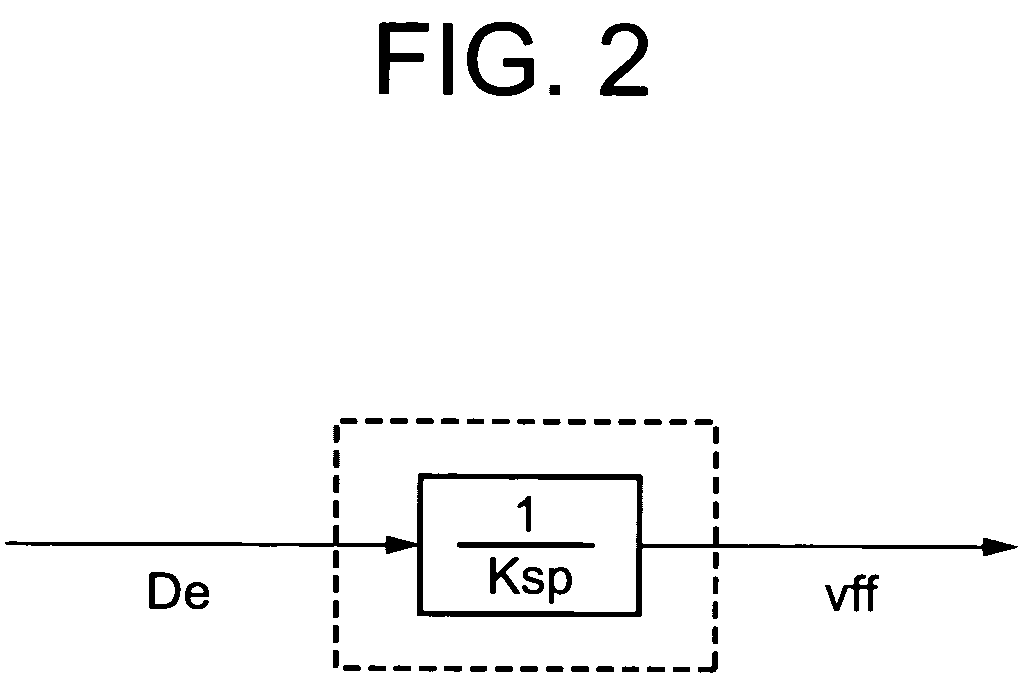Position controller and controlling method therefor
a technology of position controller and control method, which is applied in the direction of electric controller, program control, instruments, etc., can solve the problems of reducing the overall robustness of the control, causing resonance, etc., and reducing the possibility of mechanical resonance, the effect of preventing overshoot and reducing the feedforward
- Summary
- Abstract
- Description
- Claims
- Application Information
AI Technical Summary
Benefits of technology
Problems solved by technology
Method used
Image
Examples
embodiment 1
[0019]FIG. 1 represents a block diagram of entire Embodiment 1 according to the present invention. In the block diagram, feedback control is based on control using a position P (proportional) and speed PI (proportional and integral).
[0020]A configuration of Embodiment 1 is explained.
[0021]A model calculation means 1 inputs a command position xr and outputs model torque Ta, a model speed va, and a model position xa that are ideal for position control.
[0022]Because the model torque Ta, the model speed va, and the model position xa are outputted as models of suitable acceleration, speed, and position in response to the command position, various configurations can be considered for use in the model calculation means 1 corresponding to each model. A case is given in which the model position simply equals the command position, the model speed is given as a first-order differential of the command position, and the output of the model torque is set at “0”, or the model torque is given by mu...
embodiment 2
[0040]In Embodiment 2 as contrasted to Embodiment 1, the output from the overshoot-prevention-gain calculation means 10 is mapped using a table corresponding to an actual condition of the plant 6.
[0041]FIG. 4 is a block diagram for the overshoot-prevention-gain calculation means 10 in Embodiment 2 according to the present invention. In Embodiment 1, position control has been explained in such cases in which the friction-coefficient estimated value De is approximately proportional to the speed.
[0042]However, depending on the structure of the plant 6, there also exist cases in which the friction-coefficient estimated value De irregularly varies without being proportional to the actual speed vm. In such cases, the speed-integral-term feedforward gain vff is not given by Equation 4 represented in Embodiment 1, but it is rather suitable that the friction-coefficient estimated values De corresponding to the speed-integral-term feedforward gains vff are prepared as a table in advance, and ...
embodiment 3
[0044]In Embodiment 3, the estimated disturbance torque Td in Embodiment 1 is estimated using a disturbance observation means.
[0045]FIG. 5 illustrates an entire block diagram of Embodiment 3 according to the present invention. In FIG. 5, the same numerals as those in FIG. 1 denote the same or equivalent parts.
[0046]In Embodiment 1, when a correct inertia value is set in the model calculation means 1, and the control gain of the feedback system is high enough, it does not cause any problem in that a torque subtracted the model torque Ta from the torque command is estimated as the disturbance torque. In Embodiment 3, another case is represented in which, in order to estimate the disturbance torque Td as represented in FIG. 5, a disturbance observation means 8 estimates the disturbance-torque estimated value from an actual torque Tm inputted into the plant and the actual speed vm, then outputs to the friction-coefficient estimating means 9 the estimated value.
[0047]The disturbance obse...
PUM
 Login to View More
Login to View More Abstract
Description
Claims
Application Information
 Login to View More
Login to View More - R&D
- Intellectual Property
- Life Sciences
- Materials
- Tech Scout
- Unparalleled Data Quality
- Higher Quality Content
- 60% Fewer Hallucinations
Browse by: Latest US Patents, China's latest patents, Technical Efficacy Thesaurus, Application Domain, Technology Topic, Popular Technical Reports.
© 2025 PatSnap. All rights reserved.Legal|Privacy policy|Modern Slavery Act Transparency Statement|Sitemap|About US| Contact US: help@patsnap.com



